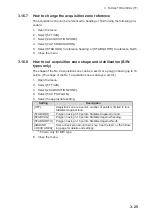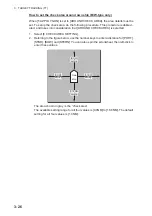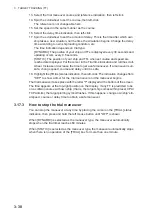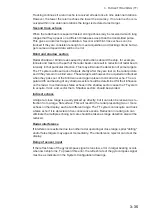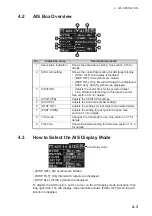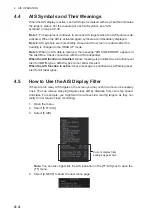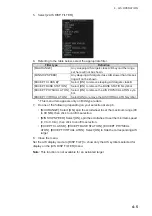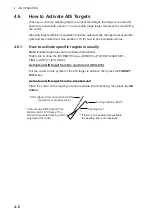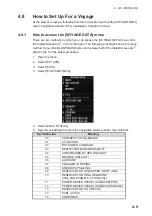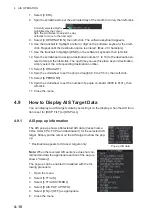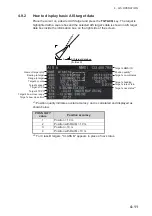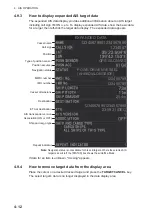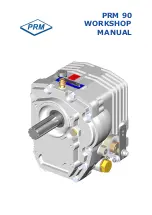
3. TARGET TRACKING (TT)
3-35
Tracking continues if a return echo is received at least once in nine antenna rotations.
However, the fewer the return echoes the lower the accuracy. If no return echo is re-
ceived within nine antenna rotations the target is declared a lost target.
Second trace echoes
When the radar beam is super refracted, strong echoes may be received at such long
ranges that they appear on a different timebase sweep than the transmitted pulse.
This gives an incorrect range indication. Second- and third-trace echoes can be
tracked if they are consistent enough to meet acquisition and tracking criteria but tar-
get course and speed data will be in error.
Blind and shadow sectors
Radar shadow or blind areas caused by obstructions aboard the ship, for example,
funnels and masts, in the path of the radar beam can result in reduction of radar beam
intensity in that particular direction. This may eliminate the detection of some targets.
The TT system will lose track of targets shortly after they are lost on the radar picture
and if they remain in a blind zone. These targets will however be acquired and tracked
when they pass out of the blind zone and again present normal radar echo. The an-
gular width and bearing of any shadow sector should be determined for their influence
on the radar. In certain cases false echoes in the shadow sector cause the TT system
to acquire, track, and vector them. Shadow sectors should be avoided.
Indirect echoes
A target at close range is usually picked up directly, but it can also be received as re-
flection from a large, flat surface. This will result in the radar presenting two or more
echoes on the display, each at a different range. The TT system can acquire and track
a false echo if it is detected in five consecutive scans. Reduction in radar gain can
eliminate the multiple echoing but care should be taken as range detection also will be
reduced.
Radar interference
If interference is extreme due to another radar operating at close range, spiral "dotting"
and/or false targets may appear momentarily. The interference rejector can clear the
display.
Delay of sensor input
If the refresh rate of the gyrocompass signal is too slow, error in target bearing occurs
when own ship turns. To prevent this error, the refresh rate of the gyrocompass signal
must be as indicated in the System Configuration drawings.
Summary of Contents for FAR-2218
Page 132: ...1 OPERATIONAL OVERVIEW 1 110 This page is intentionally left blank ...
Page 176: ...3 TARGET TRACKING TT 3 36 This page is intentionally left blank ...
Page 202: ...4 AIS OPERATION 4 26 This page is intentionally left blank ...
Page 232: ...5 VIDEO PLOTTER OPERATION 5 30 This page is intentionally left blank ...
Page 294: ......





